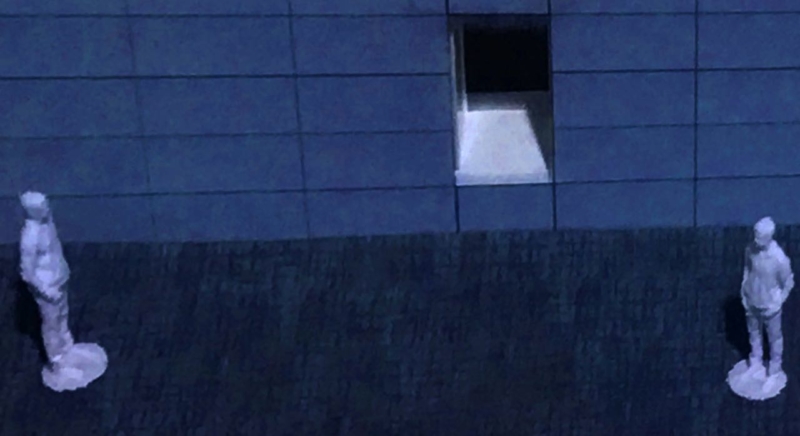An essay by Jorge Antonio Millan, illustrated by Christopher Woods
“With liberty and justice for all.”
To some, the morning pledge of allegiance was a formality, routinely required. For me, it was something different altogether. As I remember it, I could sense the somber notion of being part of something bigger. The pledge harnessed in me feelings of safety, affirmation and equality.
Now in my mid-thirties, I lay here on my bunk, on my 1,718th day in Immigration and Customs Enforcement (ICE) detention and wonder where all that palpable justice went.
Although my beginning was in Mexico, my principles of Americanism began early: I arrived in the United States an infant. Growing up, I never gave my citizenship much thought. I knew I was different; I just didn’t feel it.
Do I feel it now? Yes, yes I do.
In our looking-glass world of immigration enforcement, ICE can decide, for any number of reasons, to detain a noncitizen for weeks, months, or in my case, even years. To my family, my detention excites indignation, astonishment. To the legal system, perhaps little alarm.
Courts and commentators have long assumed that ICE detention is a form of civil confinement merely because the proceedings of which it is part are deemed civil. But how can they know what we detainees are going through? We are experiencing it—they are not. Likewise, as immigration activists and lawyers argue the dangers of prolonged detention, they, too, can only speculate.
To set the foundation, I want to make it clear. I may be on American soil, but the American solidarity I grew up in stops at the locked steel doors of my detention facility.
ICE detention—as I see it and live it—is nothing more than outright racial antagonism.
Although the most punitive features of penal confinement resonate through these walls, ICE detention runs on a different frequency. Here—you can feel it in the air—detainees are placed on the lowest human level. Whatever your race, the color of your skin, or the nature of your beliefs, you can’t help but feel the mixture of indignities. It’s not just the fact that most of our basic freedoms are taken away, it’s the whole process itself. Our lives are being dissected at every stage, and we are often criticized for past behaviors that don’t reflect who we are today.
This has made me question my self-worth and personal identity. What is to become of me? Do my life-long history in the United States and my family ties mean nothing? And while this psychological warfare runs its daily course, my living conditions are tightly regulated. I am truly an alien to the free world.
During my detention, I’ve been the recipient of many bond hearings. Let me tell you, as I’m sure my fellow detainees will agree, at these hearings you are on trial. And when the Immigration Judge denies your release, it might as well be a jail sentence.
I know how this all sounds, but I don’t bear any ill feeling toward this country. After all, I am an American—at heart. I suffer here not just for my livelihood, family, and children, but for the way the American flag made me feel when I pledged allegiance to it. Yet I truly believe I will someday experience those feelings again.
So, I definitely would not use the word “civil” to describe ICE detention. Whatever cloak or disguise ICE detention may assume, this place tests the deepest notions of what is fair and right and just.
Thus, it is critically important to consider the question Immigration Judge Anthony S. Murray once asked me, “How long can ICE hold you?”
Jorge Antonio Millan entered immigration custody in 2013, where he remains to this day. To level the playing-field, Millan has undertaken comprehensive paralegal and criminal justice studies while in immigration detention. Millan wrote “Life on ICE” to provide acute insight into our immigration system.
Christopher Woods is a writer, teacher and photographer who lives in Texas. He has published a novel, The Dream Patch; a prose collection, Under a Riverbed Sky; and a book of stage monologues for actors, Heart Speak. His work has appeared in The Southern Review, New England Review, New Orleans Review, Columbia and Glimmer Train, among others. View his photography gallery at Christopher Woods.zenfolio.com.


Share your thoughts about this.